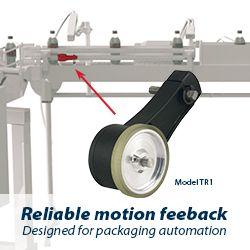CTA Publishes Its First-Ever Drones Standard at Technology & Standards Forum
Three-day event closes with working groups addressing stress, sleep monitoring data
San Francisco, CA, May 11, 2017 - On the final day of the Consumer Technology Association's (CTA) Technology & Standards Forum, CTA's Portable Handheld and In-Vehicle Electronics Committee, R6, today published a groundbreaking standard for the drone sector - guidance on serial numbers for small drones. The three-day, semi-annual Forum in San Francisco convened 150 experts from across the tech sector for technical strategy sessions on topics including bringing consumers more reliable and accurate activity, sleep and stress monitoring data from their wearable devices.
"Publication of CTA's first drone-related standard is a major step in our collaboration with the Federal Aviation Administration and other stakeholders," said Brian Markwalter, senior vice president, research & standards, CTA. "This approval and implementation of the standard will help maintain the rapid market growth small drones are enjoying. And we expect drones will see yet another record-setting sales year in the U.S. in 2017 - soaring 40 percent over last year, driven by manufacturers delivering easier-to-use drones with even more advanced cameras, sensors, software and other features."
Among the other CTA-led working group events at the Forum:
• The inaugural meeting of the Health & Fitness Technology Subcommittee's Consumer Stress Monitoring Technologies Working Group, R6.4 WG4, to launch the project ANSI/CTA-2068, Definitions and Characteristics of Consumer Stress Monitoring Technologies;
• The Sleep Monitoring Working Group, R6.4 WG1, addressing the tracking of reliable, useful data on sleep quality and duration of sleep;
• The Physical Activity Monitoring Working Group, R6.4 WG2, discussing the exchange of more accurate and consistent step, heartbeat and calorie data from device to device.
"The wearables market has grown exponentially in recent years - we're now able to capture data from more elements of our daily lives than ever before," said David Wilson, vice president, technology and standards, CTA. "With that popularity and immense amount of product choices, comes a myriad of approaches to determining how to measure a single step or what level of activity we need to burn one calorie. But at CTA, we're uniquely positioned to convene the entire ecosystem of leading tech companies and work toward alignment on a single set of measuring standards."
CTA's next Technology & Standards Forum - blending industry strategy sessions, educational opportunities and networking events as part of CTA's continued efforts to help grow emerging segments of the consumer technology industry - runs Sept. 26-28 in San Diego, CA. Anyone interested in CTA's standards activities is encouraged to learn more about participation at standards.CTA.tech.
CTA's U.S. Consumer Technology Sales and Forecasts report projects the total wearables market in 2017 will reach 48 million unit sales, up 14 percent year over year, and earn $5.5 billion in revenue - a three percent increase. And CTA expects U.S. sales for drones will top 3.4 million units - a 40 percent jump from 2016 - and $1 billion in revenue for the first time, a 46 percent increase.
###
About Consumer Technology Association:
Consumer Technology Association (CTA)™ is the trade association representing the $292 billion U.S. consumer technology industry, which supports more than 15 million U.S. jobs. More than 2,200 companies - 80 percent are small businesses and startups; others are among the world's best known brands - enjoy the benefits of CTA membership including policy advocacy, market research, technical education, industry promotion, standards development and the fostering of business and strategic relationships. CTA also owns and produces CES® - the world's gathering place for all who thrive on the business of consumer technologies. Profits from CES are reinvested into CTA's industry services.
Featured Product

